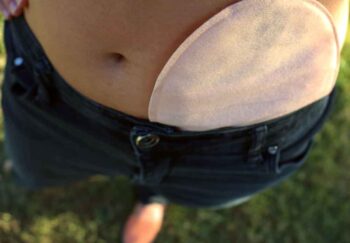Groin pain is tricky. It can creep up on you as a dull ache or burning sensation. Or it can announce itself suddenly and sharply. While it’s easy to jump to “hernia” when you notice pain in the groin, there are other potential culprits.
The medical terms for a hernia in the groin area are inguinal hernia (the most common type) and femoral hernia (a less common type). Most people who have a groin hernia are diagnosed with an inguinal hernia.
Learning how to tell when you may have a hernia and when something else may be going on can help you get the right treatment.
Look for a Mass
“It’s common to think you may have a hernia when it’s actually a groin sprain,” says Aaron Sachs, MD, a surgeon at UVA Health who has expertise in hernia repair. “The number 1 way to tell the difference between a groin hernia or strain is if there’s a mass.”
What Does Hernia Treatment Look Like?
If you think your groin pain is an inguinal hernia, you may need care from a specialist. Learn more about what treatment includes.
The mass may be too small to feel, “but if there’s no mass, there’s no hernia,” he says.
A hernia in the groin develops when tissue inside the abdomen pushes through a weak spot in the abdominal wall near the groin. This creates a bulge, or mass.
Pay Attention to Pain
Hernias can cause pain and discomfort. In severe cases, they can also cause changes in bowel or bladder habits.
Pain can happen with a hernia or groin strain, but there are usually differences.
For example, “you may lift something and notice a mass,” Sachs says. “But the truth is often that the mass has been slowly evolving until you notice it while lifting something heavy. On the other hand, with a groin sprain or strain, it’s much more likely that you had zero issues before, and now have pain after doing something physical.”
Also, pain with a hernia tends to feel like a dull ache or burn, although it can sharpen when you lift something or even sneeze or cough. A groin strain is usually a sharp pain you notice when the muscle or tendon gets injured. But it becomes more of a feeling of soreness or tenderness over time.
Rule Out a Sports Hernia
There’s also something called a sports hernia, Sachs says, which is not, in fact, a hernia. Or even a pulled muscle. Instead, it’s an overuse injury that causes groin pain.
“It belongs in the groin sprain and strain camp much more than the hernia camp,” Sachs says. “While we sometimes treat it with surgery, a sports hernia is a different animal.”
Know When To Call the Doctor
It’s important to watch out for severe pain in the groin, especially when you’re also experiencing nausea and vomiting, says Cullen Carter, MD, a surgeon at UVA Health who specializes in abdominal surgery, including hernia repair.
“If you have sharp pain that comes on suddenly, along with symptoms like nausea and vomiting, it could mean a hernia that requires emergency surgery to repair,” Carter says.
Get the Right Treatment
Treating a hernia in the groin is much different from groin strain treatment.
Treatment for a hernia depends on its type, size, symptoms, and complication risk. A muscle strain or sprain may improve with rest and ice. But a hernia won’t heal on its own. It’s best to talk to a hernia specialist who can help determine the right treatment for you.
A specialist may recommend watchful waiting. That’s monitoring the hernia instead of performing surgery right away. They may also advise some lifestyle changes. Those may include losing weight or treating a chronic cough, which can make a hernia worse.
Still, the only way to fix a hernia is with surgery. We typically suggest surgery if the hernia is:
- Cutting off the blood supply (a medical emergency)
- Getting bigger
- Interfering with your daily life
- Painful
“Establishing a relationship with a specialist once you have a hernia diagnosis, even if you don’t end up having surgery right away, is critical to ensuring you get the care you need, when you need it,” Carter says.


